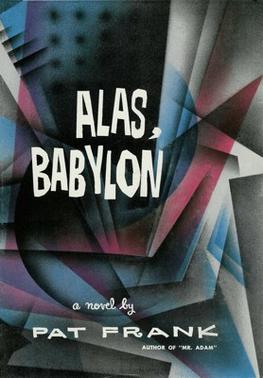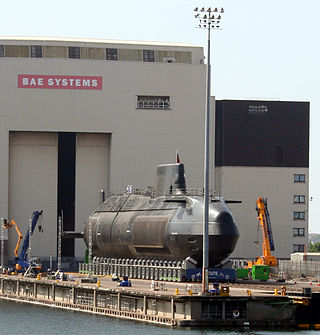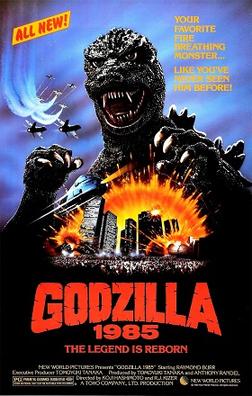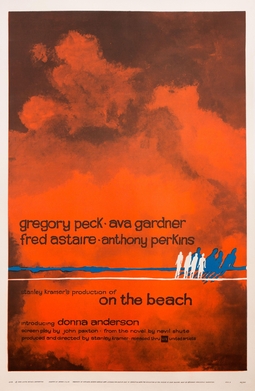
A nuclear weapon is an explosive device that derives its destructive force from nuclear reactions, either fission or a combination of fission and fusion reactions, producing a nuclear explosion. Both bomb types release large quantities of energy from relatively small amounts of matter.

K-219 was a Project 667A Navaga-class ballistic missile submarine of the Soviet Navy. It carried 16 R-27U liquid-fuel missiles powered by UDMH with nitrogen tetroxide (NTO). K-219 was involved in what has become one of the most controversial submarine incidents during the Cold War on Friday 3 October 1986. The 15-year-old vessel, which was on an otherwise routine Cold War nuclear deterrence patrol in the North Atlantic 1,090 kilometres (680 mi) northeast of Bermuda, suffered an explosion and fire in a missile tube. While underway a submerged seal in a missile hatch cover failed, allowing high-pressure seawater to enter the missile tube and owing to the pressure differential ruptured the missile fuel tanks, allowing the missile's liquid fuel to mix and ultimately combust. Though there was no official announcement, the Soviet Union claimed the leak was caused by a collision with the submarine USS Augusta. Although Augusta was operating within the area, both the United States Navy and the commander of K-219, Captain Second Rank Igor Britanov, deny that a collision took place.

K-19 was the first submarine of the Project 658 class, the first generation of Soviet nuclear submarines equipped with nuclear ballistic missiles, specifically the R-13 SLBM. The boat was hastily built by the Soviets in response to United States' developments in nuclear submarines as part of the arms race. Before she was launched, 10 civilian workers and a sailor died due to accidents and fires. After K-19 was commissioned, the boat had multiple breakdowns and accidents, several of which threatened to sink the submarine.

The Day After is an American television film that first aired on November 20, 1983, on the ABC television network. The film postulates a fictional war between the NATO forces and the Warsaw Pact over Germany that rapidly escalates into a full-scale nuclear exchange between the United States and the Soviet Union. The action itself focuses on the residents of Lawrence, Kansas, Kansas City, Missouri, and several family farms near American missile silos. The cast includes JoBeth Williams, Steve Guttenberg, John Cullum, Jason Robards, and John Lithgow. The film was written by Edward Hume, produced by Robert Papazian, and directed by Nicholas Meyer.

K-19: The Widowmaker is a 2002 American historical submarine film directed and produced by Kathryn Bigelow, and produced by Edward S. Feldman, Sigurjon Sighvatsson, Christine Whitaker and Matthias Deyle with screenplay by Christopher Kyle. An international production of the United States, United Kingdom, Germany and Canada, the film takes place in 1961 and focuses its story on the Soviet Hotel-class submarine K-19.

Trinity was the code name of the first detonation of a nuclear weapon, conducted by the United States Army at 5:29 a.m. MWT on July 16, 1945, as part of the Manhattan Project. The test was of an implosion-design plutonium bomb, nicknamed the "gadget", of the same design as the Fat Man bomb later detonated over Nagasaki, Japan, on August 9, 1945. Concerns about whether the complex Fat Man design would work led to a decision to conduct the first nuclear test. The code name "Trinity" was assigned by J. Robert Oppenheimer, the director of the Los Alamos Laboratory, inspired by the poetry of John Donne.

Apocalyptic and post-apocalyptic fiction is a subgenre of science fiction in which the Earth's civilization is collapsing or has collapsed. The apocalypse event may be climatic, such as runaway climate change; astronomical, such as an impact event; destructive, such as nuclear holocaust or resource depletion; medical, such as a pandemic, whether natural or human-caused; end time, such as the Last Judgment, Second Coming or Ragnarök; or any other scenario in which the outcome is apocalyptic, such as a zombie apocalypse, cybernetic revolt, technological singularity, dysgenics or alien invasion.

Alas, Babylon is a 1959 novel by American writer Pat Frank. It is an early example of post-nuclear apocalyptic fiction and has an entry in David Pringle's book Science Fiction: The 100 Best Novels. The novel deals with the effects of a nuclear war on the fictional small town of Fort Repose, Florida, which is based upon the actual city of Mount Dora, Florida, approximately 35 miles northwest of Orlando, Florida. The novel's title is derived from the Book of Revelation: "Alas, alas, that great city Babylon, that mighty city! for in one hour is thy judgment come." The cover art for the Bantam paperback edition was made by Robert Hunt.

Testament is a 1983 drama film based on a three-page story titled "The Last Testament" by Carol Amen (1933–1987), directed by Lynne Littman and written by John Sacret Young. The film tells the story of how one small suburban town near the San Francisco Bay Area slowly falls apart after a nuclear war destroys outside civilization. It was one of the films, along with The Day After and Threads that portrayed life after a nuclear war, mostly in response to an increase in hostility between the United States and the Soviet Union.

David Graham's Down to a Sunless Sea (1979) is a post-apocalyptic novel about a planeload of people during and after a short nuclear war, set in a near-future world where the USA is critically short of oil. The title of the book is taken from a line of the poem Kubla Khan by Samuel Taylor Coleridge.

Ice Station Zebra is a 1963 thriller novel written by Scottish author Alistair MacLean. It marked a return to MacLean's classic Arctic setting. After completing this novel, whose plot line parallels real-life events during the Cold War, MacLean retired from writing for three years. In 1968 it was loosely adapted into a film of the same name.

A nuclear submarine is a submarine powered by a nuclear reactor, but not necessarily nuclear-armed. Nuclear submarines have considerable performance advantages over "conventional" submarines. Nuclear propulsion, being completely independent of air, frees the submarine from the need to surface frequently, as is necessary for conventional submarines. The large amount of power generated by a nuclear reactor allows nuclear submarines to operate at high speed for long periods, and the long interval between refuelings grants a range virtually unlimited, making the only limits on voyage times being imposed by such factors as the need to restock food or other consumables.

Voyage to the Bottom of the Sea is a 1961 American science fiction disaster film, produced and directed by Irwin Allen, and starring Walter Pidgeon and Robert Sterling. The supporting cast includes Peter Lorre, Joan Fontaine, Barbara Eden, Michael Ansara, and Frankie Avalon. The film's storyline was written by Irwin Allen and Charles Bennett. The opening title credits theme song was sung by Avalon. The film was distributed by 20th Century Fox.

Crimson Tide is a 1995 American submarine action thriller film directed by Tony Scott and produced by Don Simpson and Jerry Bruckheimer. It takes place during a period of political turmoil in Russia, in which ultranationalists threaten to launch nuclear missiles at the United States and Japan.

Godzilla 1985 is a 1985 kaiju film directed by R. J. Kizer and Koji Hashimoto. The film is a heavily re-edited American localization of the Japanese film The Return of Godzilla, which was produced and distributed by Toho Pictures in 1984. In addition to the film being re-cut, re-titled, and dubbed in English, Godzilla 1985 featured additional footage produced by New World Pictures, with Raymond Burr reprising his role as American journalist Steve Martin from the 1956 film Godzilla, King of the Monsters!, which itself was a heavily re-edited American adaptation of the 1954 Japanese film Godzilla.

The Last Ship is a 1988 post-apocalyptic fiction novel by American writer William Brinkley. The Last Ship tells the story of a United States Navy guided missile destroyer, the fictional USS Nathan James (DDG-80), on patrol in the Barents Sea during a brief, full-scale nuclear war between the United States and the Soviet Union. It details the ship's ensuing search for a new home for her crew.

Damnation Alley is a 1977 American post-apocalyptic film directed by Jack Smight, loosely based on the 1969 novel of the same name by Roger Zelazny. The original music score was composed by Jerry Goldsmith, and the cinematography was by Harry Stradling Jr. Poorly received with critics and audience, it has since achieved a cult following.

On the Beach is a 1959 American post-apocalyptic science fiction drama film from United Artists starring Gregory Peck, Ava Gardner, Fred Astaire, and Anthony Perkins. Produced and directed by Stanley Kramer, it is based on Nevil Shute's 1957 novel On the Beach depicting the aftermath of a nuclear war. Unlike the novel, no one is assigned blame for starting the war, which attributes global annihilation to fear compounded by accident or misjudgment.
Portrayals of survivalism, and survivalist themes and elements such as survival retreats have been fictionalised in print, film, and electronic media. This genre was especially influenced by the advent of nuclear weapons, and the potential for societal collapse in light of a Cold War nuclear conflagration.


















